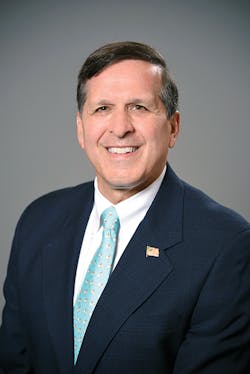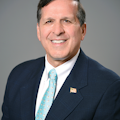How to row your lifeboat: High-value recovery strategies for coping with the pandemic (Part 1)
COVID-19 has changed dentistry forever. Practices must now deal with issues such as infection control, decreased patient volume, acquiring personal protective equipment (PPE), and patients with health, safety, and financial concerns. With everything going on, it can feel like you’re drowning. The good news is that with the right strategies, you can build your own lifeboat, chart your course, and successfully row yourself back to land.
The 24-month COVID-19 recovery timeline
We at the Levin Group developed the following COVID-19 recovery timeline to understand where and how to apply the high-value strategies that will be covered in this three-part series:
Phase 1 (months 1 to 4): Pent-up demand
In the first phase of COVID-19 recovery, pent-up demand will allow practices to achieve excellent production. We find ourselves in this phase now, and we’re seeing that pent-up patient demand is helping many practices achieve record production goals in their first weeks of reopening. The most important thing to remember during Phase 1 is that it’s a temporary state generated by practice shutdowns and will not continue indefinitely.
Phase 2 (months 5 to 12): Declining production
In Phase 2, almost all dental practices will experience a decline in practice production after pent-up demand comes to an end. Levin Group Data Center research from the 2008–2009 recession indicates that practices lost 8%–9% of their patients, 20% of hygienists were released from their positions within 12 months, and practice production declined anywhere from 15%–50%. Due to the nature of the COVID-19 crisis, practices also will have to contend with a health and safety scare. Where practices fall in the 15%–50% of decline will depend upon how well they implement high-value strategies directly related to improving performance in the recovery.
Phase 3 (months 13 to 24): Recovery
The third phase of the recovery is where practices will gradually build back sustainable production and revenue. In a business turnaround, the goal is always to recover as quickly and deeply as possible. This is the stage where high-value strategies, measurement, and modification are critical.
Recovery strategies that lead to success amid COVID-19
Every business will be facing a turnaround for the next 24 months. This article series will highlight high-value strategies, tactics, and actions that focus exclusively on a successful recovery. The following strategies represent some of the best opportunities that practices have to save themselves from drowning in the recovery process. Valuating, implementing, and measuring each one of these strategies will be the difference between no recovery, average recovery, and successful recovery.
Strategy 1: Crisis leadership
A great leader in good times may or may not be a great leader in a crisis. Why? The type of leadership that is essential in a crisis is different from the type of leadership that works when things are running smoothly. The key to leadership in a crisis is resilience. Resilient leaders are agile, flexible, and willing to change quickly. In a business turnaround, these are essential leadership qualities.
Conversely, rigid leaders will have a very hard time dealing with the recovery because they are resistant and slow to change. Rigid leaders will be slow to train staff on recovery strategies, modify internal practice systems to maximize production and revenue, and measure results. Dental practices under this type of leadership could very well focus on implementing new infection control protocols and ignore other aspects of the practice that need attention.
The resilient leader understands that in a business turnaround, training, modifications, and daily measurements must be made quickly. The resilient leader welcomes new information and is willing to change to achieve the right results. They will inspire their team to be flexible while bearing in mind that they’ve been through a great deal as well and likely carry their own anxieties, concerns, and issues. The resilient leader is also compassionate—quick to reassure the team and actively work through necessary adjustments to each role.
Strategy 2: The one-page COVID-19 strategic recovery plan
In a business turnaround, every practice should have a one-page COVID-19 strategic recovery plan. You can learn more about how to create one at our COVID-19 Recovery Resource Center at levingroup.com. The one-page COVID-19 strategic recovery plan is literally one page broken up into four quadrants labeled “Practice,” “Staff,” “Patients,” and “Financial.” In each quadrant you identify no more than four high-value strategies that will be accomplished during the recovery. There are other details that can be added to this plan, but it should be reviewed at least twice a day—morning and afternoon—by all members of the team to ensure that the practice is continually focusing on doing the right things without distraction. Think of this as a rallying point. We are already hearing from many practices that team members are modifying their duties to achieve the objectives that are laid out in their one-page plan.
Strategy 3: The top 25 relationships
The pent-up demand phase can fool many practices into thinking that everything is fine, and the recovery will go well. However, in Phase 2 most practices will experience declining production and most dentists will not know what to do. The top 25 relationships are literally a list of 25 people that will help you in the recovery, and it should amount to more than just a list of friends. Individuals such as staff members, bankers, financial advisors, accountants, attorneys, consultants, executive coaches, landlords, suppliers, or credit card companies are all great. Anyone who can help you during the recovery should be on the list.
Strategy 4: The new recovery schedule
Scheduling will be the first way to get patients back into the office. Extending your hours is a good first step in modifying your schedule. In the wake of COVID-19, many patients will not be able to leave work as readily as they could before, and it will be much more convenient for them to make appointments during the evening or on weekends. Expanded hours will help you move faster through pent-up demand, quickly increase production and revenue, and accumulate cash. As I mentioned, in 2008–2009, practices lost 8%–9% of their patients. Unfortunately, Levin Group is projecting that patient loss will be as high as 15% during this crisis and recovery. Every practice must take advantage of every opportunity to minimize the loss of patients.
Another factor in the new recovery schedule is focusing on reactivating overdue patients every day. The longer you wait, the more patients you lose. We recommend that practices develop a nine-week patient reactivation process where they contact patients by phone once a week for three weeks, followed by text messages once a week for three weeks, followed by emails once a week for three weeks. Make sure to have clear, informative scripting prepared for calls, because people need to understand that it is safe and affordable to come back to your dental practice.
For example, in the scripting we have developed for clients, we include the line, “Interest-free financing is available for any patient who wants to take advantage of it.” This helps to give patients the confidence they need to believe they can afford to come back to the dental practice. We know from previous recessions that patients who are financially challenged often give up dentistry for a long period of time.1 It’s also essential to proactively address health and safety so that people understand that dentistry has always been a leader in infection control and that your practice follows all ADA, OSHA, and CDC guidelines. Many more patients will schedule appointments if this approach is taken. And remember, any patients who are not reactivated in this nine-week process should be moved into a 90-day follow-up cycle.
Summary
COVID-19 has altered our understanding of how dental practices must operate to be successful. Adapting won’t be an easy process, but it is possible to save yourself from drowning in a sea of lost patients, production, and revenue. This article series will include many high-value strategies that will help practices to perform at the highest level during the 24-month projected recovery. Practices that follow and implement the high-value strategies recommended in this series will have the tools they need to build their own lifeboat and row it toward a faster, better, and deeper recovery.
Editor's note: This article is the first in a three-part series. Read part two here, and look for part three in October.
Reference
1. Household component of the medical expenditure panel survey, 1996–2015. Agency for Healthcare Research and Quality; 2012. Updated March 4, 2020. https://healthdata.gov/dataset/medical-expenditure-panel-survey-household-component
About the Author
Roger P. Levin, DDS, CEO and Founder of Levin Group
Roger has worked with more than 30,000 practices to increase production. A recognized expert on dental practice management and marketing, he has written 67 books and more than 4,000 articles, and regularly presents seminars in the US and around the world. To contact Dr. Levin or to join the 40,000 dental professionals who receive his Practice Production Tip of the Day, visit levingroup.com or email [email protected].


